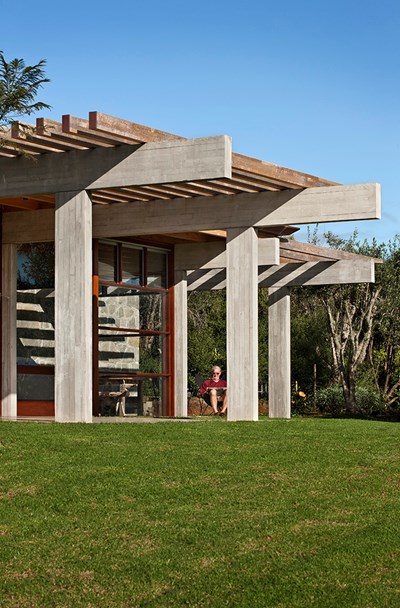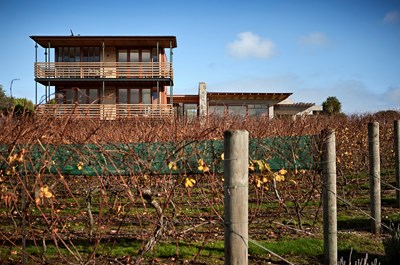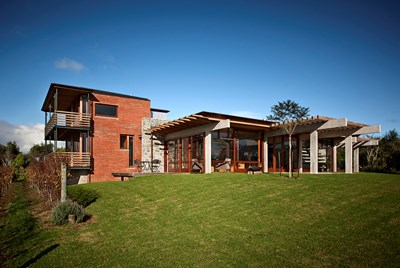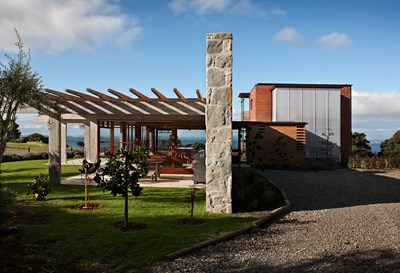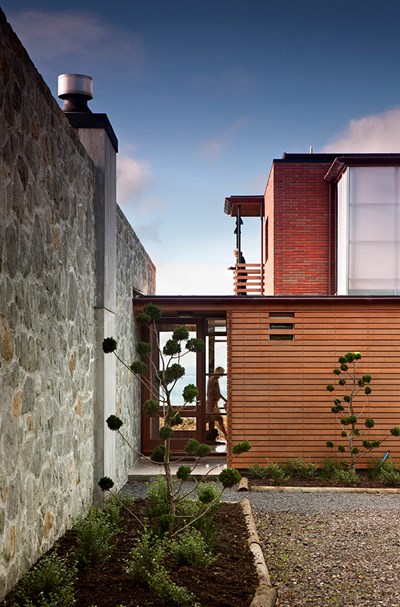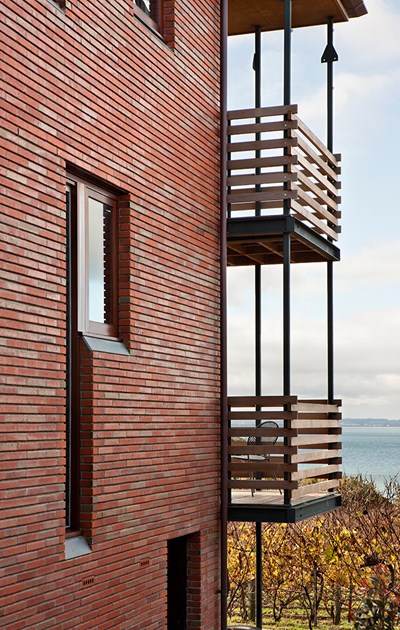We shape our dwellings, then our dwellings shape us. Architect Marshall Cook writes about his approach to residential architecture, how site and context affect design and how a house must adapt as its users move through life.
In any building design project, there will be limitations to what can be achieved on the site within the allowable budget. Our challenge is to turn these constraints into advantages. To begin with, the section of land should be thought of as a cube of air that can be occupied. The sole of this cube, the earth, is also the most expensive part of the site to modify and the most unforgiving in providing the conditions needed for human comfort.
The neighbouring effects of trees, buildings and other landforms as well as distant noise sources such as roads, railways or aircraft define the sides of the cube. Taken as a whole, this is the environment the house has to confront. It becomes the occupiers’ face to the outside world.
Other factors that influence the house design are planning laws and design covenants that can limit choices and the availability of services. In addition, other essential utilities that need to be accommodated within the design include water and power, internet cabling as well as pedestrian and car access. Each of these create their own particular constraints.
Also to be taken into account is the effect a new building will have on the existing character of the neighbourhood. We should consider both the built and the natural aspect.
It’s my belief the new house should ‘grow out’ of its existing conditions and quietly assume its rightful place.
Accommodating rhythms
Our human response to the rhythms of nature can be used as a guide for making decisions about site layout. On any site the orientation of the land has first claim on the position of both indoor and outdoor rooms and activities. This is because one of the most powerful influences on our moods is the passage of the sun through the cardinal points of the compass.
The east is youthful, innocent, fresh and promising whilst the north stimulates clarity and spirited activity. The west is restful, waning, thoughtful and the south maturity, acceptance and wisdom. Added to the daily mood shifts around the compass and the clock are seasonal changes and weather patterns. We need to account for these and, where possible, capitalise.
How a house occupies a site can intensify how we experience the delights of spring and the anticipation of summer that follows winter’s melancholy, as our activities migrate from indoors to outdoors. The natural deities of light and shadow, glare and gloom, warm and cold, wind and rain, peace and quiet also need to be managed by the layout of the property. Both physically and psychologically a house expands in the summer and shrinks in the winter.
Building in versatility
Each new generation of houses needs to accommodate a greater range of activities, furniture and attendant equipment than previous ones. The functions and activities that are normally performed within the house, apart from a few private ones, can also take place outdoors.
Most houses are freestanding buildings. Therefore the preciousness of the space that is left around the dwelling needs to be considered for potential physical use. In many cases the outdoor activities can be a duplication of the indoor ones. The most common are cooking and eating but there is also the potential for sleeping, bathing and other more private domestic rituals to happen outdoors as well.
The design and layout needs to take care of every household activity, somewhere, somehow and with a varying number of participants. Specific activities are usually performed in one space or they can spread over several rooms.
First, consider how small a room could be
Decisions about the size of activity spaces, equipment and furniture dictate the optimum floor area of the house and its attendant outdoor rooms. Domestic activities invariably fall into zones that are divided between private, semi-private, service, semi-public and public. A house plan usually insets buffer zones where service spaces are used to separate incompatible activities.
The most frequently performed tasks should be the most efficiently planned.
A space that is either too large or too small influences the workload. First, consider how small a room could be. Next envision how many tasks can be accommodated within that space, and how these might change over the life of the house or the life span of the occupants.
The experience of a house is strongly influenced by how we arrive at it. The owners’ experience is often through the garage and service rooms, which can be a humbling event. The rituals of greeting and farewelling vary with cultural habits. This can lead to the point where the front door area and distributing corridors can dominate the brief and unravel the budget.
How we affect the building
Over time, the inter-generational demands on a house affect more than planned separation zones or allowances for changes of equipment. Material wear and tear and the degeneration of finishes begins at floor level and ascends the walls like rising damp as children progress through to leaving age. Appliances change function, size and energy consumption. Additionally the demands of the occupants shift and vary as seasons progress and years pass.
People shrink with age. When dressed in winter clothes, we are wider than in summer garb. Teenage children consume twice as much food as pre-teens and three times as much as adults. To retain relevance, kitchens, bathrooms and service rooms need to adapt to the changing patterns of users’ needs and physical capabilities.
Children’s bedrooms can evolve to act as their living rooms or studies, ending up as entertaining areas. Garages can become recreational rooms, granny flats or student accommodation.
It makes sense to plan for these changes in use by allowing for extra plumbing, drainage and other services. Establishing your brief by defining the demands for present needs should expand to encompass future possibilities. Any potential growth or shrinkage needs to be evaluated. Tomorrow’s surpluses can overwhelm today’s shortage. This style of planning doesn’t necessarily result in a useable blueprint for the future but it will expose criteria that should be prioritised.
Satisfy human rituals and perceptions of beauty
There is a fundamental distinction between the aims of providing for the rituals of domesticity and satisfying human perceptions of beauty. From the outset, the plan or layout is essentially objective. It fulfills the demands of the brief and satisfies the constraints of the neighbouring environments. The plan describes how the house and adjacent outdoor area are enjoyed by their occupiers. The aim of the exercise is to create a sense of place, a pride of belonging and to celebrate the contribution that a beautiful house can make to everlasting memories.
 This story is from Design Guide (issue 1), a resource written by architects and designers for those thinking about undertaking a new house or renovation project. Marshall Cook is a director of Cook Sargisson & Pirie, an Auckland-based architecture practice.
This story is from Design Guide (issue 1), a resource written by architects and designers for those thinking about undertaking a new house or renovation project. Marshall Cook is a director of Cook Sargisson & Pirie, an Auckland-based architecture practice.
Other useful links
The Awhitu vineyard house was also a finalist in the 2011 Home of the Year awards. You can watch a short film of the project here.




